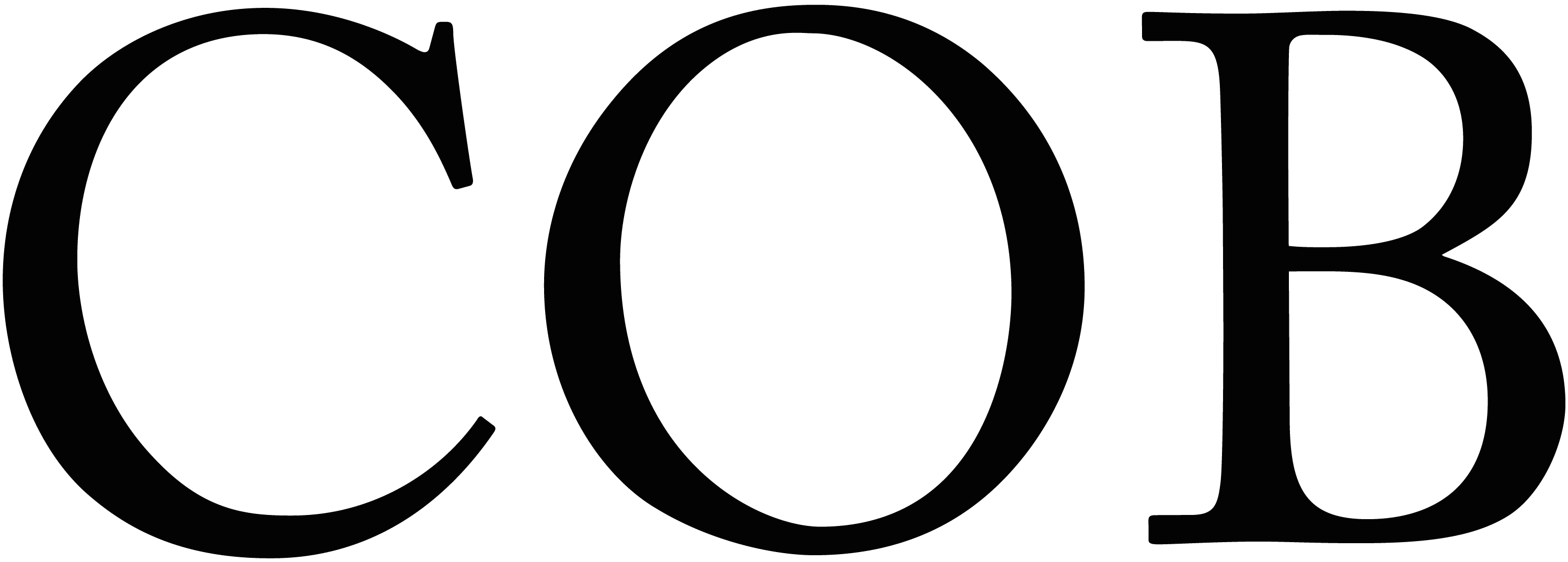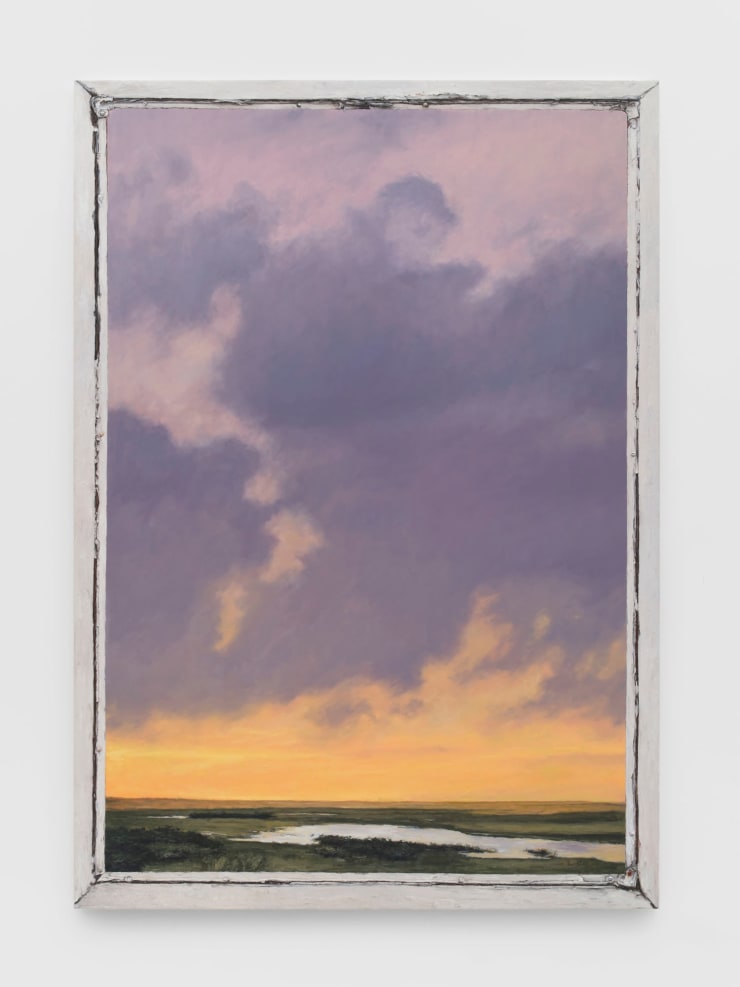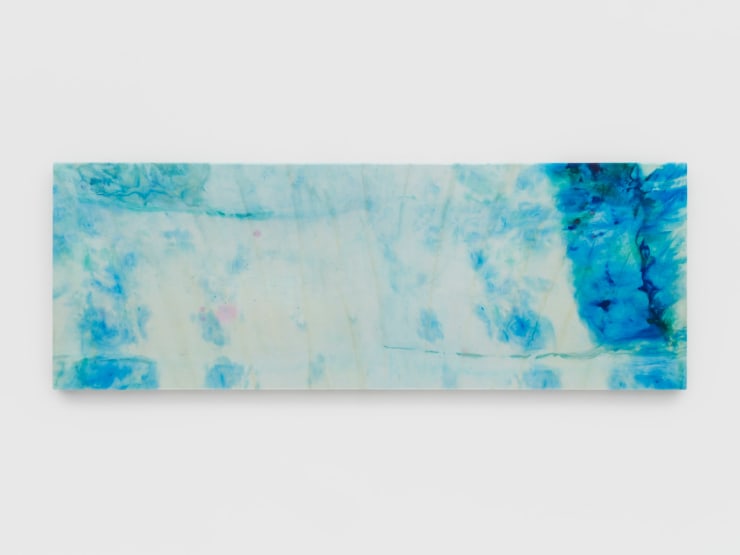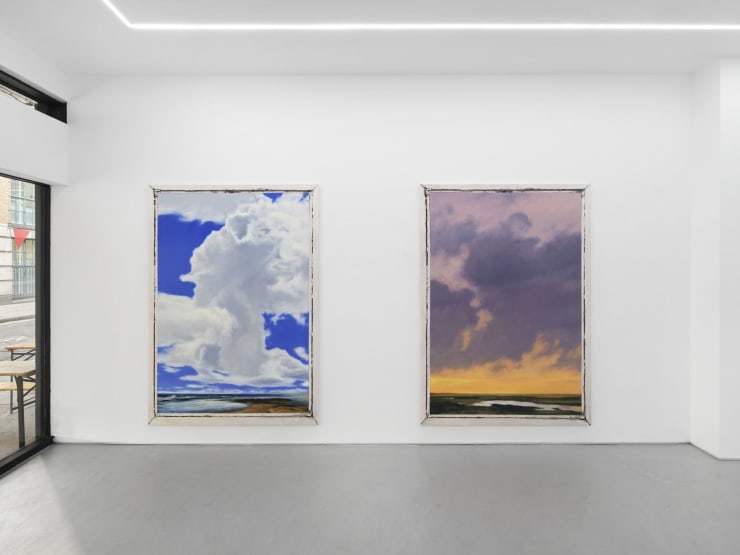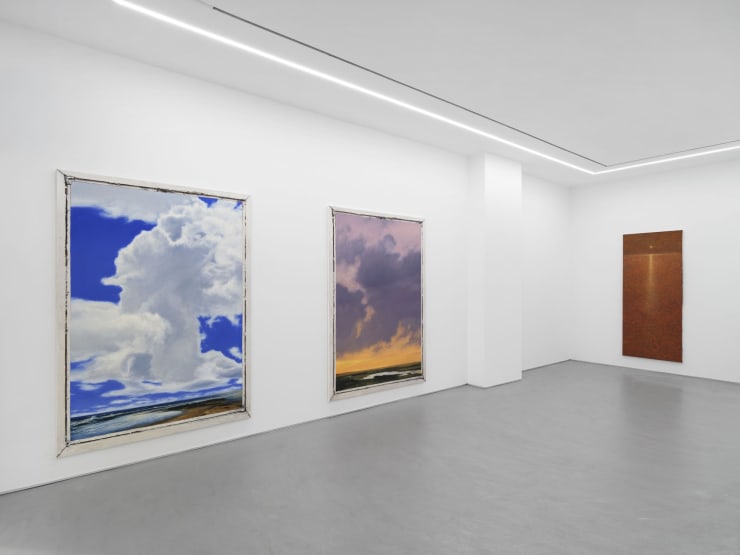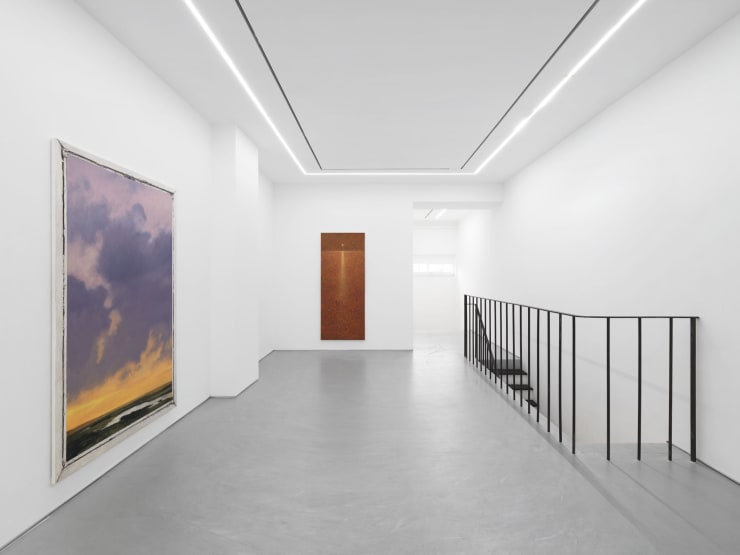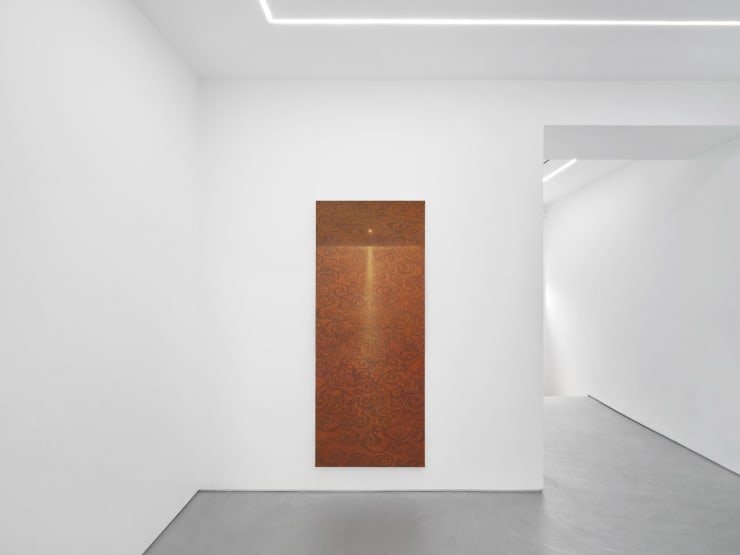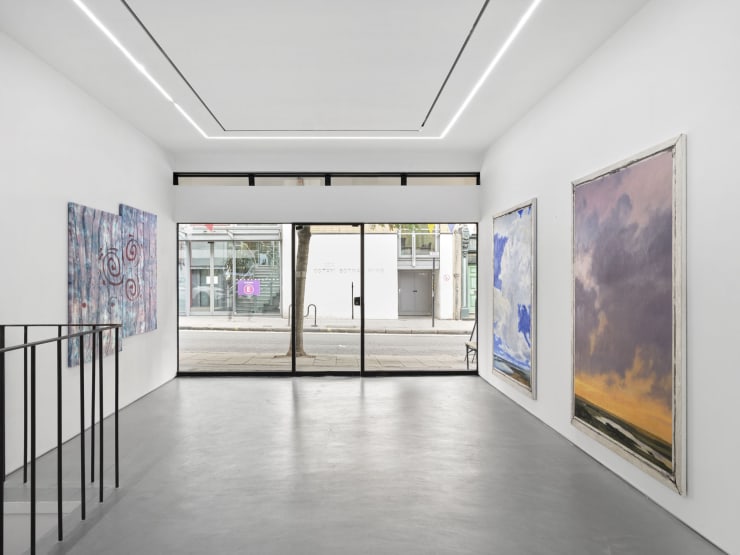Sun Dog: Group Exhibition
“We are raised above earthly things and are drawn to what is better when we contemplate the heavens” - Seneca - Naturales Quaestiones, Preface 3.2
A phenomenon known as a Sun Dog occurs when atmospheric conditions bend light into luminous halos around the sun, creating a mirage of presence appearing as a doubled sun, a twin apparition in the sky. These rare meteorological events reveal how perception is shaped not only by optics but also by expectation, imagination, and belief. Such luminous anomalies highlight nature’s capacity to both deceive and dazzle the senses, producing effects that hover between the explicable and the sublime. Sun Dog brings together works by Josh Raz, Angela Lane, Robert Roest, and Max Boyla - four artists who probe the thresholds of vision, where the natural and the spiritual, the empirical and the illusory, flicker and merge.
The exhibition draws conceptual resonance from two historical thinkers: Seneca, whose Naturales Quaestiones (written between 62 and 65 CE) considered celestial phenomena as opportunities to liberate the mind from fear and superstition, and Albert Einstein, who described a “cosmic religious feeling” a very secular reverence born not of doctrine but from contemplating the universe’s unknowable vastness. For both, observation becomes a form of belief, not in facts alone, but in feeling. They propose that the deepest insights emerge where scientific observation and spiritual humility converge. In this view, the study of nature is not about dominion, but about communion: an encounter with complexity and unpredictability approached with reverence.
Angela Lane’s paintings embody this intersection of inquiry and imagination. Working in oil on postcard-sized birch panels framed in dark walnut, Lane depicts robust, representational landscapes interrupted by miraculous celestial phenomena such as vaporous rings, spectral halos, radiant arcs of light. Drawing from art historical and scientific traditions, from German Romanticism to Enlightenment-era astronomy, she navigates a space where the folkloric, the historical, and the personal intersect. As Lane puts it, “I want these occurrences to be mostly believable, but I don’t let science or truth get in the way.” Her unpeopled scenes are not empty: we are not depicted because we are the witnesses. What we witness is both real and unreal, held in a state of perceptual openness.
Josh Raz explores the interplay between imagined and material landscapes, using painting to trace how language and memory shape our sense of place. For Raz, a landscape is never fixed, it is continually made and remade through projected narratives. Whether portraying a coin tossed into a pond or a dreamlike horizon folding into itself, he suggests that even enduring terrains be it mountains, cityscapes, valleys, fields, rivers or oceans are layered with shifting emotional and symbolic topographies. These “recited lands” are subject to erosion, distortion, and transformation, mirroring the instability of the physical world.
Night and Splitting are two complementary large-scale compositions depicting a sunrise and moonrise over monochromatic ocean horizons. With the swirling surface texture Raz is known for, they form a meditative diptych charting the interwoven rhythms of celestial time. One canvas is suffused with the anticipatory amber light of dawn, the other with the cool, reflective glow of night. Though distinct in tone, both share a formal serenity and a stillness that suggests cycles rather than moments, atmospheres rather than events.
Together, the pair of paintings evoke a metaphysical continuum in which sunrise and moonrise are not beginnings or endings, but fluid transitions within a larger, unseen order. Similarly, the paintings recall natural phenomena, mineral strata, and tidal movement, hinting at invisible forces that govern both the material and emotional worlds. They invite the viewer into a contemplative space where perception drifts between external landscapes and inner states, where time is not measured, but felt.
Raz’s landscapes are untethered from specific locations or events. Instead, they evoke states of suspension, metamorphosis, and interiority which prompts not just the question of what we see, but how we perceive. It is also arguable that both his and Lane’s works echo the synesthetic landscapes of American painter Charles E. Burchfield, who translated natural rhythms into psychological and emotional atmospheres. Burchfield was described by Edward Hopper as “the mystic, cryptic painter of transcendental landscapes, trees with telekinetic halos, and haunted houses emanating ectoplasmic auras.”
A suite of three paintings Abachta, Nahaliel, and Adiriron from Robert Roest’s series Paintings Proving Angels Are Really Watching Over Us further complicates the relationship between perception and belief. The painting titles, drawn from A Dictionary of Angel Names: Including the Fallen Angels by Gustav Davidson, introduce a body of work that blends quasi religious imagery with media critique. This series engages with pareidolia, the psychological phenomenon in which we perceive faces or figures in ambiguous forms like clouds. Roest uses this instinct as a conceptual entry point to examine the instability of interpreting visual phenomena and the seductive power of mediated images.
Inspired by viral photographs of supposed angelic apparitions in the sky, Roest reimagines and recontexrtualises such imagery into large-scale vertical paintings, framed with trompe-l’oeil windows. Within these frames, clouds, sometimes meticulously copied from photographs sometimes digitally manipulated float above fragments of 19th-century Russian landscapes by Isaac Levitan and Vladimir Orlovsky. The result is a surreal collision of historical gravitas and digital-age mythology. The vertical format, traditionally used for full-length portraiture, elevates the clouds to divine looking figures, while simultaneously interrogating our belief in what we think we see.
Roest’s practice centres on illusion, perception, and the role of images in shaping belief and manufacturing meaning. He poses questions: Can we trust our senses? Can we believe our eyes? These paintings do not attempt to prove the supernatural; rather, they unsettle the very idea of proof. In an era saturated with manipulated images, Roest’s work functions as a critical mirror. Through the conduit of natural phenomena, he reflects a collective yearning for meaning, for miracles. The angelic clouds, bent in postures of prayer, judgement, or benediction, hover in a space between the miraculous and meteorology; superstition, sensation, and suggestion.
Max Boyla’s paintings operate in a quieter, parallel register. Geometric abstractions painted through as much as on satin, emanate and shimmer with spectral light. The satin surface, central to the work’s responsiveness, shifts subtly with the viewer’s movement, turning static forms into kinetic, perceptual experiences. Evoking astronomical, molecular, or sacred geometries, his paintings suggest systems too vast or minute to fully grasp. Balancing order with irregularity, Boyla invites a quiet meditation on impermanence and light.
The choice of satin, a petroleum-derived, industrial material, is key. Its artificial sheen becomes a site of contradiction: from something manufactured and synthetic, Boyla conjures nebula-like landscapes of eerie beauty. These faux cosmologies, born of the ‘dirty’ residue of petro-capitalism, reflect a state of contemporary disillusionment while reaching toward the infinite.
Occupying a space where illusion and reality blur, his works conjure seductive yet disorienting expanses of fictional landscapes that reflect a sense of both yearning and disenchantment.
Rather than depict, they evoke, drawing the viewer into wonder. They are a quiet meditation on existence that arguably resonates with Einstein’s “cosmic religious feeling” a reverence for mystery and order unbound by dogma.
Sun Dog gathers a constellation of artists who explore the subtle, shifting terrain between vision and belief. Through celestial mirages, imagined geographies, spectral clouds, and abstract cosmologies, these works illuminate the instability of perception and the human impulse to find meaning in the unknown. Each artist, in their own way, grapples with the sublime not as a grandiose aesthetic category, but as a lived, intimate encounter with forces that elude comprehension. Whether through the lens of mythology, memory, illusion, or metaphysics, their practices invite a deep engagement with the mysterious and the immaterial. Echoing Seneca’s stoic rationalism and Einstein’s awe-filled materialism, the exhibition frames observation not as passive seeing, but as a profoundly felt, even spiritual, mode of encounter. At its core, Sun Dog reflects on both the limits and possibility of what we perceive, offering not certainty, but wonder.
